|
GLACIER National Park |
 |
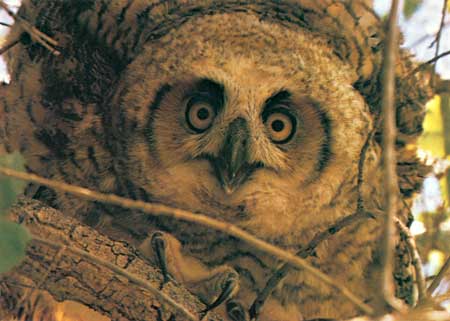 Great horned Owls are the nocturnal equivalent of Cooper's hawks and goshawks in the low-elevation forests of the park. Large and powerful, they are capable of taking prey as big as skunks. This young bird, disturbed on its day roost, clacked its bill and fluffed its leathers in a menacing manner. |
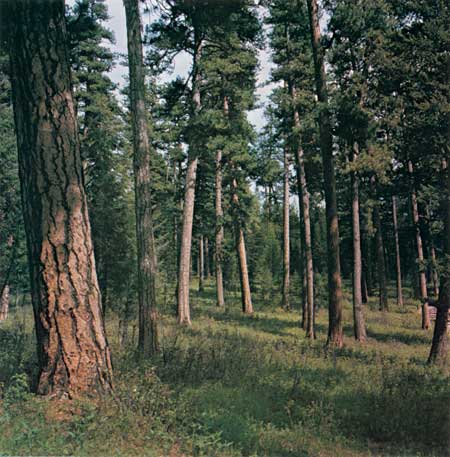 The only sizable mature stand of ponderosa pine found within the park is along the North Fork truck trail. A scattering of old ponderosas growing at the lower end of Lake McDonald suggests that at one time ponderosa forests were more extensive in this region than at present. |
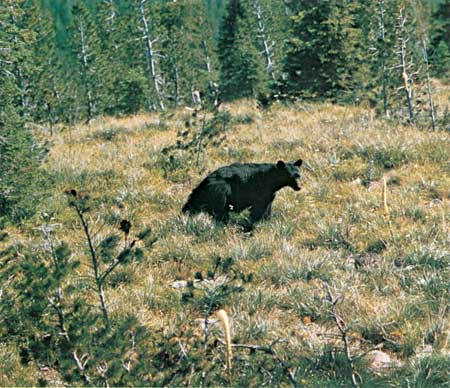 A black bear near treelimit. Bears will eat almost anything, from ants to carrion, grass to garbage. Color phases include brown and blonde bears, unlike the larger, more aggressive grizzly, which ranges out onto the plains, black bears are strictly forest creatures. |
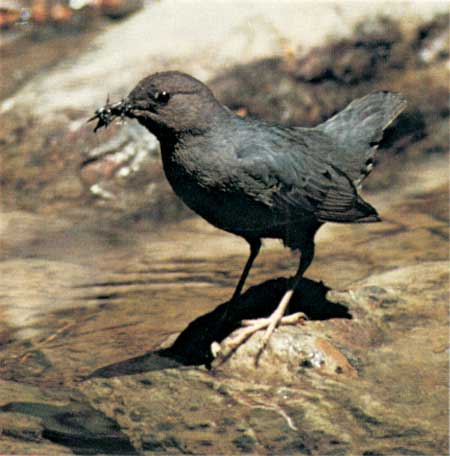 The water ouzel, or dipper, a creature of fast mountain water, is admirably outfitted to cope with its demanding environment. Stubby wings, chunky body, short tail, and oily plumage allow it to walk under water, where it scavenges for aquatic insect larvae and small fish. In flying up- and down-stream, ouzels never shortcut but follow the winding streamcourse. As long as there is open water, the dipper suffers no hardship from the mountain winter. Then, when the land is shut down and lakes are frozen over, this little bird carries on in its mountain-stream habitat, plunging into the cold water to find food, and pausing occasionally to sing. |
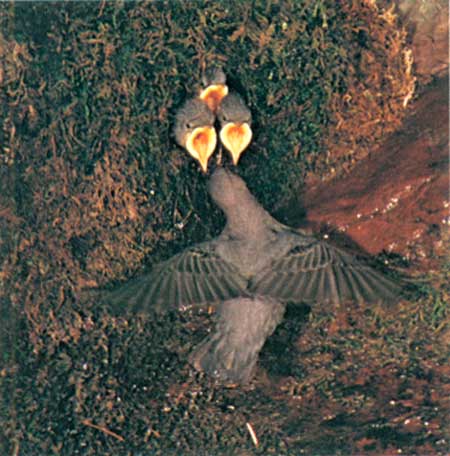 Ouzels construct their nests of living moss on cliff faces or ledges where constant spray keeps the moss moist. At fledging, the four young of this nest in Avalanche Gorge tumbled one by one into the torrent below, to be collected by the adults in quieter water downstream. Within a day they appeared to have mastered the underwater gymnastics and were feeding on their own. |

|

|
|
|
|
Last Modified: Sat, Nov 4 2006 10:00:00 pm PST |


